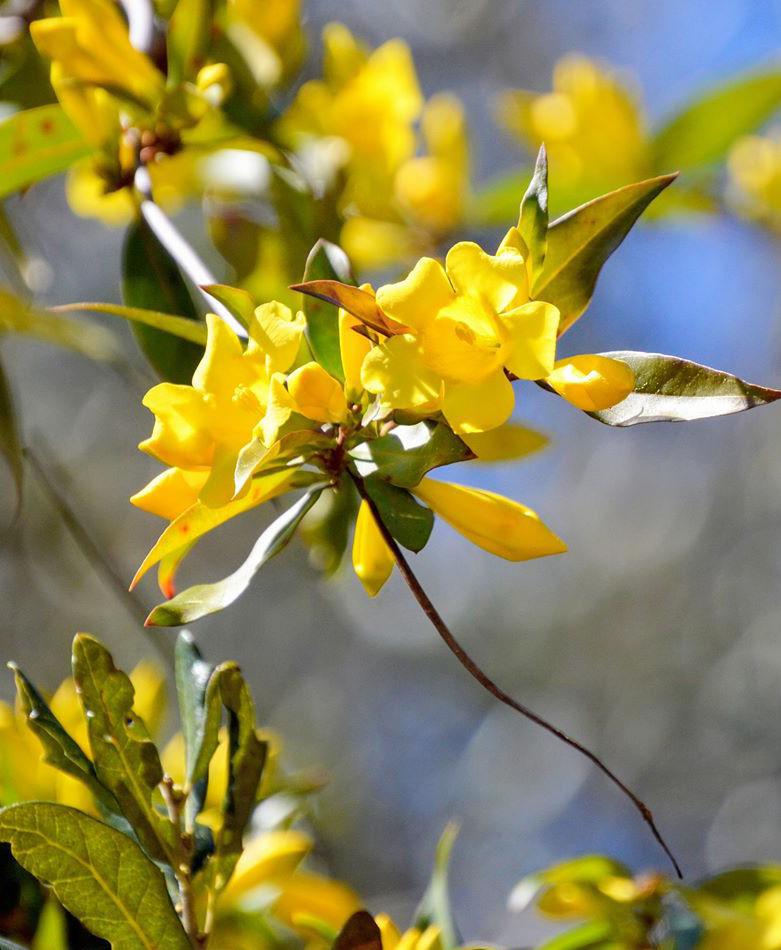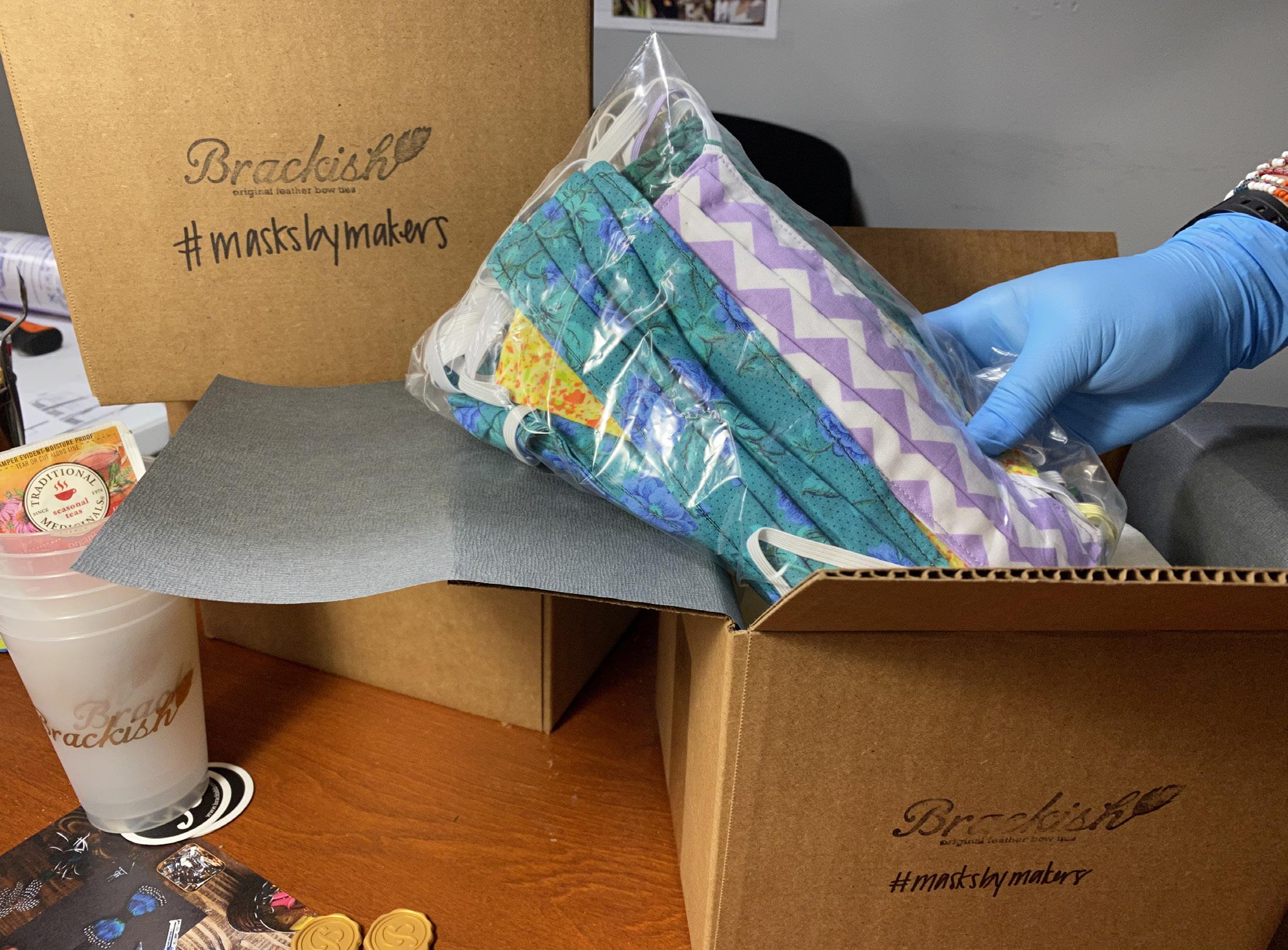9 minute read
SHELTERING
Next Article
Sheltering, Southern Style
Solitude Along The Back Roads
Words & Editorial Photos by Tom Poland
Black Friday, March 13, 2020. My niece, Benton, gets an unwelcome big 4-O birthday gift—a national emergency courtesy of COVID-19. “How lucky am I,” she said, dry as dust. Well, this was no ordinary black cat Friday. An invisible foe crept among us, here for who knows how long. COVID-19 might be on a gas pump nozzle, an ATM keypad, a grocery cart. It might kill you. It might not.
As the pending pandemic built a head of steam, a quiet pandemonium set in as people waged a personal war. Weapons include hand sanitizer, masks, and a lifeless concept, “social distancing.” Bland and costly it closes non-essential businesses and quiets streets. The economy gets a frontal lobotomy and life grinds to a halt. Schools turn virtual. Preachers save souls via streaming video. Styrofoam replaces china and cutlery as restaurants can only fulfill orders to go.
Weeks pass during which masks turn vogue-vital, letting two-legged gazes of raccoons venture forth. People post photos of their dogs wearing masks. Men tie bandanas around their face. One joker used a bra as a mask, and I even saw a statue of a whitetail deer wearing a blue mask. Meanwhile supermarkets look as if famine rages. Meats call the cancer of the plant world. By preventing trees from getting do: become a cultural icon.
and paper products? Gone.
Hair lengthens. Gas prices fall. Corporations send compassionate emails, “Dear Valued Customer.” Slogans pop up like mushrooms after an overnight rain. “Stay home. Make a difference.” “Flatten the curve.” “Conquer COVID-19 one day at a time.” “Save Lives. Quaranteam.”
People shelter at home with nowhere to go and all day to get there. The invasive plant from Asia that’s eating the South never goes on a
And when they tire of TV? Challenge their Facebook friends. “List an album that changed your life.” “Caption this photograph.” “List six famous people you’ve met.”
Not me. I kicked my one-man road act, "Sheltering, Southern Style," into high gear. Outfitted with camera, a full tank, water, and food, I social distanced at 50 MPH along gravel and dirt roads that lead to rustic beauty. I’d show my virus-shunning Facebook friends unstoppable green and lush plant. Photo of a kudzu-covered home in McCormick County - Kudzu Eats The South

A lot of forests and farmland vanished into that leafy green sea some sunlight kudzu starves them to death. Growing a foot a day it blankets trees, power poles, fences, yards, houses, cars, trucks—anything in its path. Kudzu, closely identified with the South, has done what armadillos, hydrilla, coyotes, and some northern folks have failed to
A joke goes that a Yankee asked a southern farmer how to grow kudzu. The farmer tells the Yankee to throw the kudzu seeds on the ground, then run like there’s no tomorrow. Well, there is a tomorrow for kudzu. nature, nostalgia, and seldom-seen things. My first stop? A seemingly
diet. It’s here to stay, climbing, curling, and coiling around everything in its path. Utility poles and trees don’t stand a chance. Kudzu, truth be told is more a myth than anything say the experts. Look at the photo. You be the judge.
Fire towers’ reign peaked in 1953 when 5,060 towers looked out across the land. The Civilian Conservation Corps (CCC) built a lot of good things for the country, among them, fire towers where life was lonely at the top.
Shirley Williams knows how lonely it gets. She sat atop a Georgia Forestry Commission fire lookout tower for well over 40 years near Ludowici, Georgia. Shirley said you could see for 25 miles on a clear day. Beautiful sunsets were the rule. “And you haven’t lived until you’ve been in a fire tower during a lightning storm. “Otherwise,” she added, “it’s quiet and peaceful; not a lot going on.”
I climbed the tower back home just once. Up the steps I went until I reached the trap door. Pushing through, I could see far and wide down Highway 378 into South Carolina.
Several things ended fire towers’ reign: spotters in airplanes and helicopters, satellites, video cameras, cell phones, and improvements in radio, plus a “let it burn” philosophy for managed forests. Now we know some fires are good for ecosystems. Change marches on and now this romantic symbol of conservation and safety faces hard times.
Next readers getting antsy at home, I figured a trip to the most remote place in South Carolina would grab their attention.

“Sandy Island,” they said. I visited Sandy Island, which sits between the Waccamaw and Pee Dee Rivers. The 19-square-mile island consists of prehistoric sand dunes and they’re big. Sandy Island is the highest point in Georgetown County. The only way onto the island is by water. A boatman took me there. I toured the island’s sandy lanes, saw deer, wild hogs, and longleaf pines, something you don’t see much anymore. I saw a way of living mainlanders could only guess at. The island did not get electricity until 1965. Gullah, maybe 100, live there, descendants of rice field workers.
Life on a remote island is peaceful. “No commotion,” as one resident said, but it’s arduous. Children take the school bus boat for an eight-minute journey across the Waccamaw River. Then they take a traditional bus to school. Their parents and others take motorboats to the mainland. Then they make it to their place of work by way of rides or their own vehicles.
No development. You won’t see traffic lights or asphalt. South Carolina’s largest freshwater island hosts endangered species such as the red cockaded woodpecker. At one time businessmen attempted to get a bridge built to the island but people appreciative of the island’s role in nature stopped that effort along with help from the red cockaded woodpecker’s endangered status.
Points of interest include an old schoolhouse, a bed and breakfast called Wilma’s Cottage, Pyatt’s General Store, and New Bethel Baptist Church, circa 1880.
Island residents barge vehicles over to the island, a costly undertaking. When a car or truck dies it’s left to its own devices. You’ll see abandoned appliances for the same reason. And the next time you feel aggravated for having to pump your own gas, be advised that island residents must go to the mainland and fill jerrycans with gas and haul it back to the island and then fill their vehicles.

Yes, Myrtle Beach is not that many miles away but when it comes to years, it’s beyond reach. Sandy Island—Founded by a freed slave who had worked in the island’s rice fields is lost in time.
My next trip presented a bewitching plant, never forgotten by those who see it in its native habitat.
Photo of Sandy Island from boat on the Waccamaw - South Carolina's Most Remote Place Photo of rocky shoals spider lilies at Stevens Creek - A Southern Spectacle

A botanical superstar lives in South Carolina. It’s exquisite, ephemeral, and periled, in that much of its habitat lies beneath lakes: the rocky shoals spider lily. As status goes, it’s a national plant of concern headed toward endangered status. This stunning perennial grows to three feet in height in direct sunlight. Flowing water carries its seeds away and when they land in a rocky crevice, they form a colony—if conditions are right. Alas, man’s dams did away with many rocky shoals. You’ll find it in just three states: South Carolina, Georgia, and Alabama.
Babylon had its hanging gardens and South Carolina has its watery, undulating gardens. What’s considered the world’s largest colony blesses South Carolina with blooms aplenty this time of year. You’ll find it at Landsford Canal State Park in Chester County. Stand near this blooming colony of rocky shoals spider lilies and you’ll enjoy a concert of babbling water and a banquet for the eyes. Dark green stems reminiscent of bamboo shoots support delicate flowers that bring ballerinas to mind. Dancing flowers upon a stage of rushing water. It’s a performance you’ll not forget. A magnificent colony thrives on Stevens Creek in McCormick County.
This time of year I seek out the rocky shoals spider lilies for a beautiful reason: they’re in bloom and they’re a dream for photographers and artists. You lose track of time and worries in the presence of Hymenocallis coronaria, an aquatic, perennial flowering plant species.
Moving on, skirting cities and towns and driving the back roads led me to my destination: the rocky, rugged northwest corner where a churning, green-white river ascended into legend.
From springs and steams near Cashiers, North Carolina, a mighty river first forms as a glittering mountain stream near Whitesides Mountain. The Chattooga flows 10 miles in North Carolina before forming a forty-mile border between Georgia and South Carolina. The river drops 2,469 feet over 50 miles (49.3 feet per mile), creating a wild, dangerous run. The river surges, pools, and slashes through Chattooga Country as National Geographic referred to it. It’s known too as “Deliverance Country” owing to the 1972 film, Deliverance, that made it a legend.
Fabled Section IV of the Chattooga saves its strongest, rock-hard muscle for its last seven miles where boulders and ledges beget rapids, sieves, and hydraulics. One summer an ill-fated deer ended up in a keeper hydraulic where it tumbled for a week before the river spat it out, piece by piece.
This savage-but-stunning river flows through ancient Cherokee lands and it remains untamed. Dams straddle most rivers in the Southeast, but not the Chattooga, it runs free. Fishermen, naturalists, novelists, environmentalists, essayists, filmmakers, and the curious come to the Chattooga. Rafters and veteran kayakers brave its Sections III and IV. The river has long attracted thrill seekers, many times fatally. You don’t get on this river unless you’re a veteran of dangerous whitewater. Best to employ an outfitter to take you down river, and when you do you’ll understand why James Dickey wrote, “I felt as though I had dipped into some supernatural source of primal energy. It was like riding on a river of air.”
“Sheltering, Southern Style” doesn’t end here. Like the Chattooga it keeps on rolling. For now, I’ll drop homebound readers off but I’ll keep sheltering along the back roads, so don’t be surprised when you hear from me again somewhere down a back road where the air is fresh, sunlight warm, and the fragrance of wildflowers sweeten a summer day. I’ll cruise mask-less through a land of nature, beauty, and quaint reminders of those who passed this way long, long before I did.










